Speak with an expert
Have questions about our products? Get in touch with one of our industry experts.
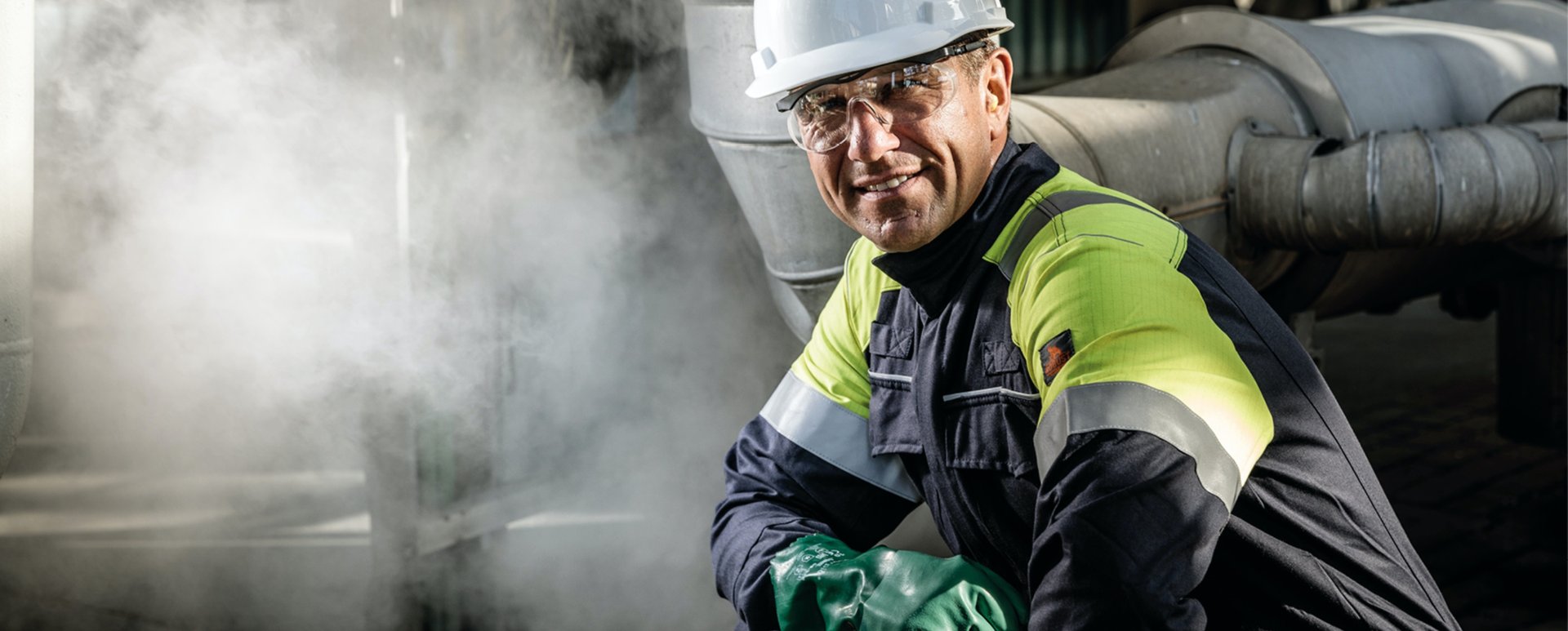
Are you in the process of improving your workers’ protective clothing to ensure their safety? Then you came to the right place! This page educates you on all relevant aspects of protective clothing and helps you prioritize. You will feel confident to take the right safety decisions your company needs, and your colleagues love.
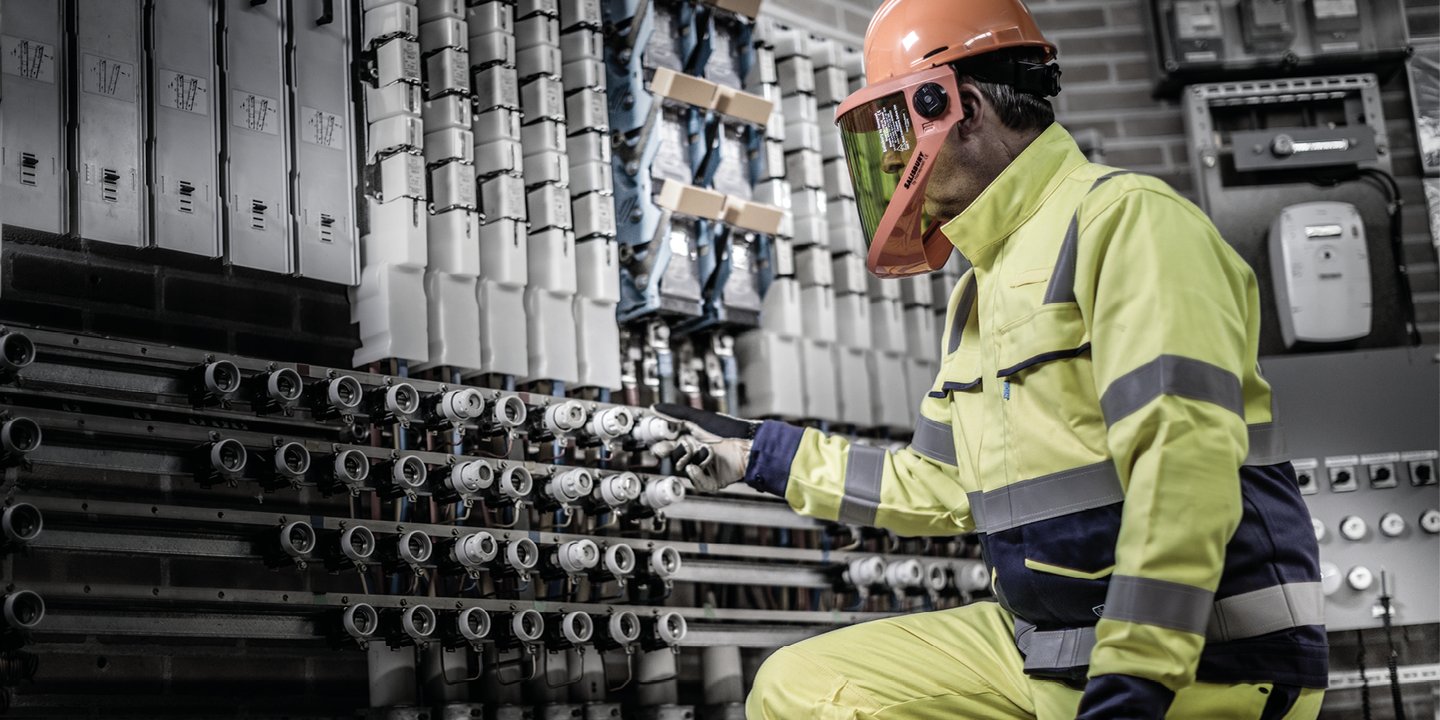
Why workers should be protected against arc flash with protective clothing and how to comply with the IEC 61482 standard.
Professionals who do installation or maintenance work in industries like energy production or network and distribution are often well aware that they are at risk of arc flash. But factories or industrial plants often also contain heavy equipment where electronic switch boxes can cause arc flash or flashovers. How do you protect employees in the work environment with the right protective clothing?
Arc flashes are low impedance connections in an electrical system, which causes unwanted electric discharge via the air. As a result, there is a rapid rise in temperature (up to 19,000 degrees Celsius, which is almost four times as hot as the sun) and pressure in the air between electrical conductors. This causes an explosion which is known as an arc blast.
Protective clothing is a crucial part of arc flash protection to prevent flashovers (the transfer of fire) from causing injuries or life threatening situations.
Luckily there are standards for protection against thermal hazards of arc flash. It can be tested in two ways: the open-arc method (IEC 61482-1-1) and the Box test (IEC 61482-1-2).
Often, professionals that are at risk of arc flash work in highly challenging environments. Near traffic, in industrial plants, at high voltage cables, underground... apart from arc flash clothing, chances are that they need protective clothing for other work related hazards as well, such as high visibility clothing or garments that are fire resistant.
As a Health and Safety manager, it can feel quite daunting to be informed of all possible risks and corresponding rules and regulations.
That is why at TenCate Protective Fabrics, we encourage you to collaborate with fabric suppliers, garment makers and industrial laundries. Together with our partners we are able to develop protective fabrics that are Made for Life. Read more and find out how you can activate your role in the protective clothing value chain.
![FR Fabrics Guide [EN]](https://eu.tencatefabrics.com/hubfs/EU%20-%20Images%20website/EU%20-%20Mock-up%20nieuwe%20afmetingen/FR%20Fabrics%20Guide%20%5BEN%5D.png)
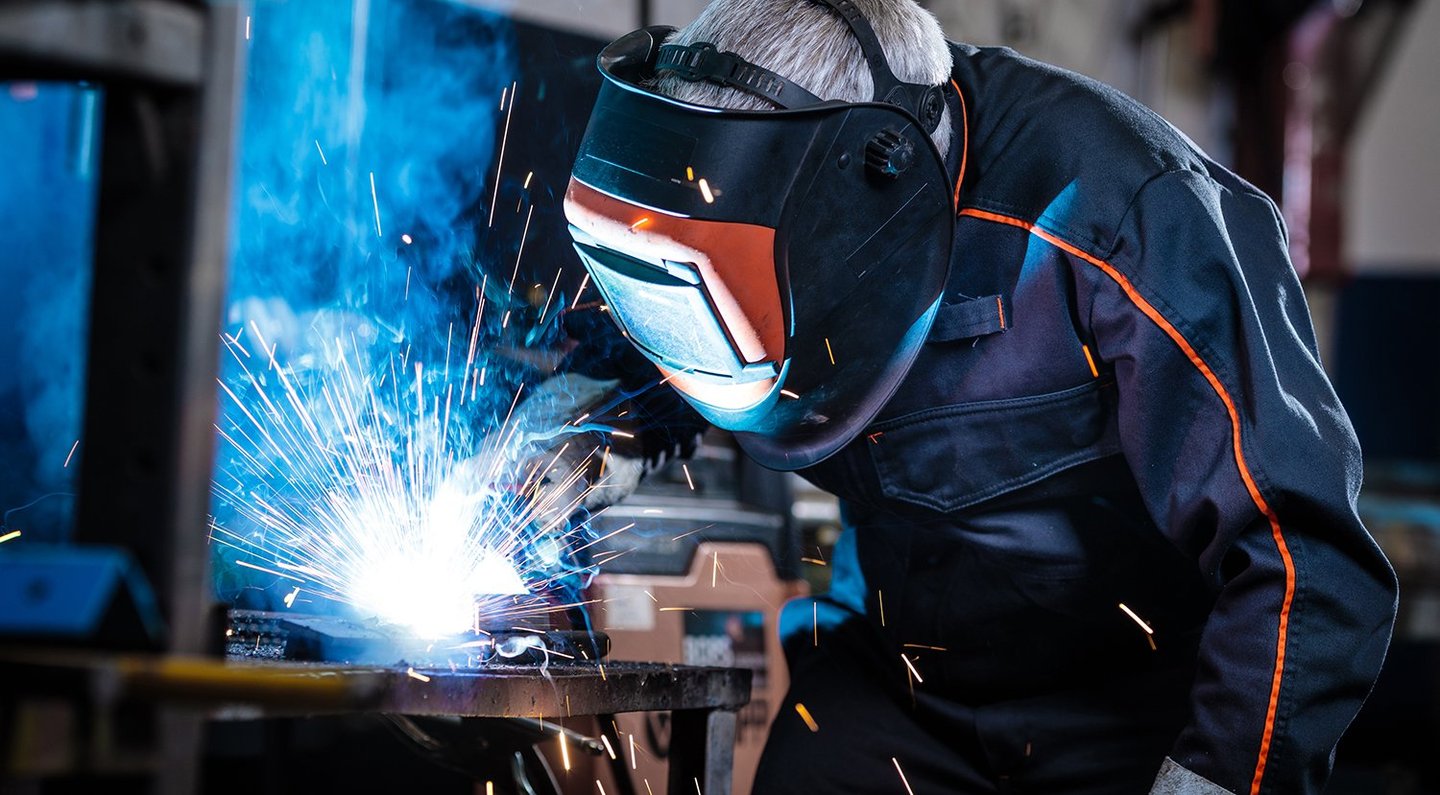
For many Health and Safety managers, the combination of welding activities and protective clothing is an absolute no-brainer. But are you aware of the differences between class 1 and class 2 of EN ISO 11611? And do you know what the impact is of comfort on safety?
In this page, we inform you about protective clothing for the use of welding and allied processes.
Protective clothing for welding is designed to protect wearers against molten metal splashes, but also protect against short contact with flame and radiant heat from an electric arc that is used for welding. On top of that, the clothing also minimizes the possibility of electrical shock by short-term contact with live electrical conductors at voltages up to approximately 100V (in normal welding conditions).
Apart from protection, comfort also plays a highly important role in this industry. You will probably recognize that protective clothing that is worn during welding activities is often not comfortable. However, protective clothing for welding that is both safe and comfortable has a truly positive influence on the overall effectiveness and happiness at the workplace. It is advised to take into consideration the following factors:
The balance between protection and comfort is very important. Higher levels of protection often means more weight, but the garment has to remain comfortable enough. Constructions and fibre blends can make the difference.
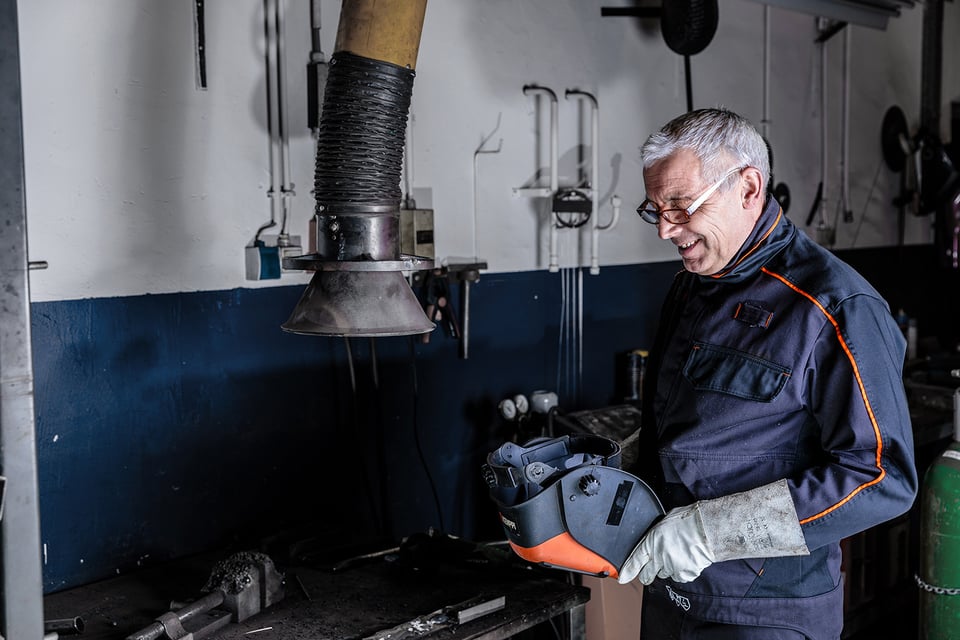
EN ISO 11611 is the standard you need to meet for welding and allied processes specifically. How well are your workers protected? And which factors have effect on the level of protection? Read our blog about this welding standard and learn more.
EN ISO 11611, or ‘NEN-EN-ISO 11611:2015’ is the current standard which specifies minimum basic safety requirements for protective clothing for welding and allied processes. This international standard does not cover the requirements for feet, hands, face or eyes, so take into consideration that proper personal protective equipment (PPE) is needed to ensure overall protection for welders.
The EN ISO 11611 norm consists of four tests, which simulate different FR-risks: radiant heat (ISO 6942), molten metal (9150), flame spread (ISO 15025) and electrical resistance (EN 1149-2).
The EN ISO 11611 itself is divided into class 1 and class 2. Do you know which one you should comply with? Gas welding, for example, is a class 1 welding activity. MMA welding (with basic or cellulose-covered electrode), MAG (with CO2 or mixed gasses) and MIG (with high current) welding are all class 2 welding activities. It is important that you are aware of the differences, in order to determine which standard your protective clothing needs to comply with. A risk assessment is crucial in order to familiarize yourself with the risks in your unique work environment.
In order to achieve a class 2-rating, you need to meet the class 2 test results of radiant heat and molten metal tests. To meet the standard, the fabric is tested on:
As a Health and Safety manager, your aim is to build a strong safety culture in which protective clothing plays an important role.
Apart from complying with relevant standards, many other elements determine which fabric to select for your protective clothing... what is the effect of top- and undergarments on the level of protection the garment can offer? … how well do garments protect against grinding risks? … and what about washing protocols, that are extremely important in welding processes due to contamination with oils and greases?
Good news - you do not have to take this journey on your own.
At TenCate Protective Fabrics, we encourage you to collaborate with fabric suppliers, garment makers and industrial laundries. Together with our partners we are able to develop protective fabrics that are Made for Life. Read more and find out how you can activate your role in the protective clothing value chain.
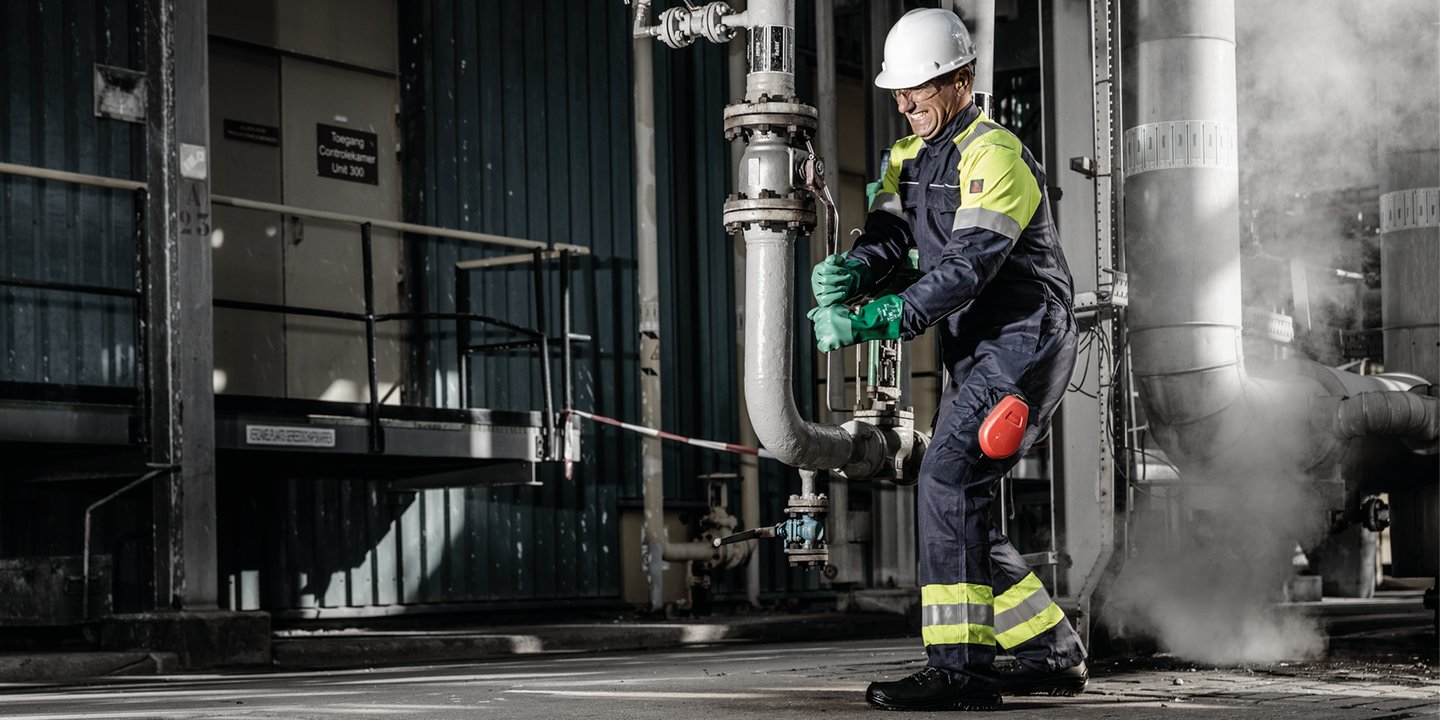
If you are active in an industry where your employees work with chemicals, it is extremely important that they are shielded against chemical splash. But how do you determine which protective clothing is appropriate for your unique work environment? And how do you ensure that your protective clothing is not only safe, but also comfortable to wear during a whole shift? In this page, we tell you all about protective clothing for chemical splash.
Because working with chemicals puts workers at risk of accidental exposure to these chemicals, they are required to wear protective clothing at all times. This clothing should not only shield the body from possible injuries caused by chemical sprays, splashes or liquid aerosols, but should also - regarding the work environment - allow proper heat release and sweat uptake. In order for the clothing to be truly protective, it should always be worn in the proper manner no matter the environment, emphasizing the importance of comfort even more.
The type of protective fabric you select determines, for example, the weight and moisture absorption. And in order to know which protective clothing you need, it is crucial to be aware of safety rules and regulations you should comply with.
Suit type properties like this are divided in six types:
The Type 6 property is regulated in EN 13034.
Protective clothing that complies with the current EN 13034 standard offers protection against light spray, liquid aerosols or low pressure, low volume splashes, against which a complete liquid permeation barrier (at the molecular level) is not required. The document covers both Type 6 chemical protective suits and partial body protection (Type PB). To comply with the EN 13034 standard for Type 6 protective clothing, a series of tests is conducted on the fabric and on a model (mannequin).
Terms like ‘limited protection’ often causes confusion. We are, after all, talking about chemicals! On top of that, Type 6 Protective clothing that complies with the EN 13034 standard is not fully liquid-tight. This might raise some questions as well. It is very important to understand that workers in this industry are being exposed to chemicals by exception (by accident), not by rule! You can look at EN 13034 as an “entry-level” standard for protection against chemical spray, splash or aerosols. But does this type of protective clothing match your unique work environment.
Your company has a general duty to ensure the safety and health of workers in every aspect related to work. By conducting a risk assessment, the employer is able to create insights in possible work related threats and take effective measures in regards to chemical safety clothing. The risk assessment might also expose other risks, like heat, flames or electric arc, that your workers need protection against.
As mentioned before, the Type 6 safety clothing for chemicals is not fully liquid-tight. The standard requires a fluorocarbon finish of fabrics every single washing, allowing it to repel light liquids or aerosols. This example strongly emphasises the importance of a close harmony between all parties involved in the protective clothing value chain.
That is why at TenCate Protective Fabrics, we encourage you to collaborate with fabric suppliers, garment makers and industrial laundries. Together with our partners we are able to develop protective fabrics that are Made for Life. Read more and find out how you can activate your role in the protective clothing value chain.
![Proclaud Guide [EN]](https://eu.tencatefabrics.com/hubfs/EU%20-%20Images%20website/EU%20-%20Mock-up%20nieuwe%20afmetingen/Proclaud%20Guide%20%5BEN%5D.png)
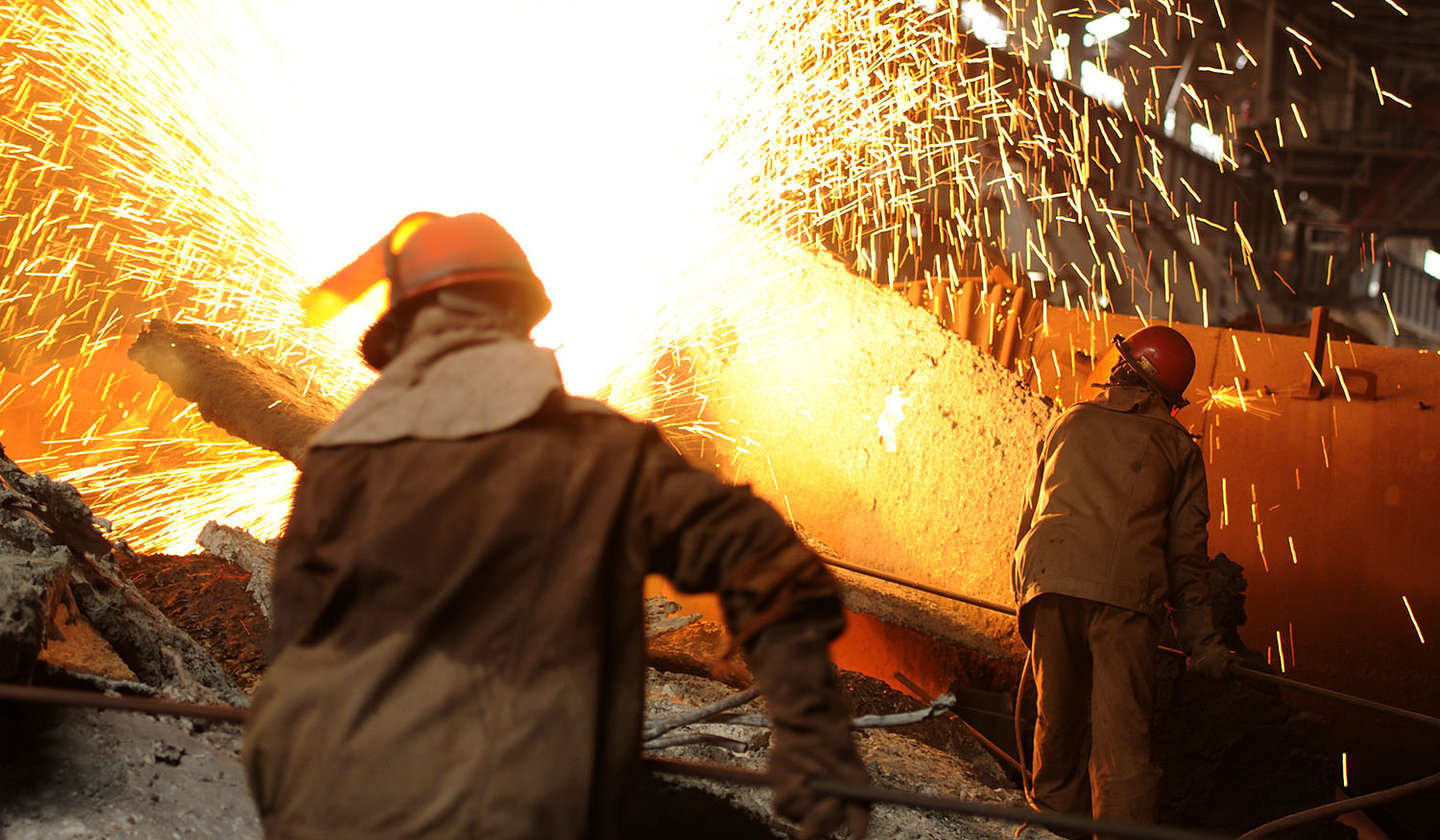
In a wide range of industries, professionals can encounter risks of heat and flames in their daily jobs. Every work environment is different, which adds up to the complexity of selecting the right protective clothing.
In this page, we inform you about flame retarding clothing and the corresponding EN ISO 11612 standard.
Flame retardant clothing is protective clothing which is either made with FR treated fabrics based on cotton, or clothing that is manufactured with FR inherent fabrics - read more about the difference between FR treated and inherent FR here.
It is meant for workers who are in need of clothing with limited flame spread properties, and where the user can be exposed to radiant or convective or contact heat, or to molten metal splashes.
In order to determine which protective clothing suits your unique work environment best, you have to know the possible risks of your unique work environment. After all, there are a lot of variables that are important while making sure that your workers are protected at all times. Building and maintaining a strong safety culture is crucial, especially in environments with fire and/or heat hazards.
A risk assessment helps you to determine the possible risks and the standards your employees’ protective clothing should comply with.
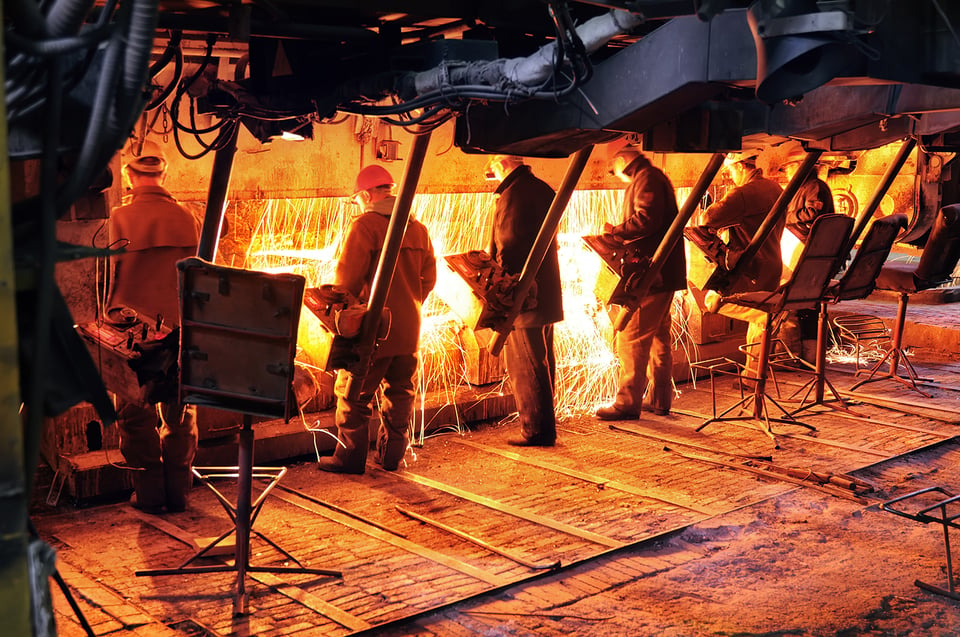
You have probably heard of the terms FR treated and inherent FR. But what is the actual difference between the two and why is one cheaper than the other?
In terms of heat and flame protection, two of the relevant standards are EN ISO 11612 and the complementary EN ISO 11611. A lot of the executed tests are similar, but EN ISO 11611 is specifically needed in work environments where workers are engaged in welding and allied processes.
Thirdly, the ISO 11613 standard specifies test methods and minimum performance requirements for protective clothing used by firefighters who are engaged in support activities of firefighting.
EN ISO 11612, or ‘NEN-EN-ISO 11612:2015’ is the current international standard for clothing to protect against heat and flames. Protective clothing that meets the requirements of EN ISO 11612, is specifically designed to protect the wearer from heat and/or flames.
In order for your flame retardant protective clothing to comply with EN ISO 11612, the fabric of choice needs to pass at least two tests: the A test (flames spread) and at least one of the following.
Secondly, the test results are classified into different performance levels. This means you not only need to know whether a fabric passed the test or not, but also to what degree. This performance level is related to the size of risk impact. For example, the three performance levels in the E test indicate the level of protection the garment offers against different amounts of molten iron splash.
Depending on the risk levels of your unique work environment, you need a fabric that meets a certain performance level.
The EN ISO 11612 is the right start to make sure your protective clothing meets basic heat and flame risk requirements. However, the level of safety of your workers is strongly affected by the everyday practice of your work environment. You want to know which level of protection is needed for your workers, but different test results and performance levels can be rather confusing.
That’s why it is a good idea to ask your partners for test results of protective clothing, for a better understanding of how performance levels are aligned with your work environment.
At TenCate Protective Fabrics, we encourage you to collaborate with fabric suppliers, garment makers and industrial laundries.
The EN ISO 11612 is the right start to make sure your protective clothing meets basic heat and flame risk requirements. However, the level of safety of your workers is strongly affected by the everyday practice of your work environment. You want to know which level of protection is needed for your workers, but different test results and performance levels can be rather confusing.
That’s why it is a good idea to ask your partners for test results of protective clothing, for a better understanding of how performance levels are aligned with your work environment.
At TenCate Protective Fabrics, we encourage you to collaborate with fabric suppliers, garment makers and industrial laundries. Together with our partners we are able to develop protective fabrics that are Made for Life. Read more and find out how you can activate your role in the protective clothing value chain.
![Voice of the wearer [EN]](https://eu.tencatefabrics.com/hubfs/EU%20-%20Images%20website/EU%20-%20Mock-up%20nieuwe%20afmetingen/Voice%20of%20the%20wearer%20%5BEN%5D.png)
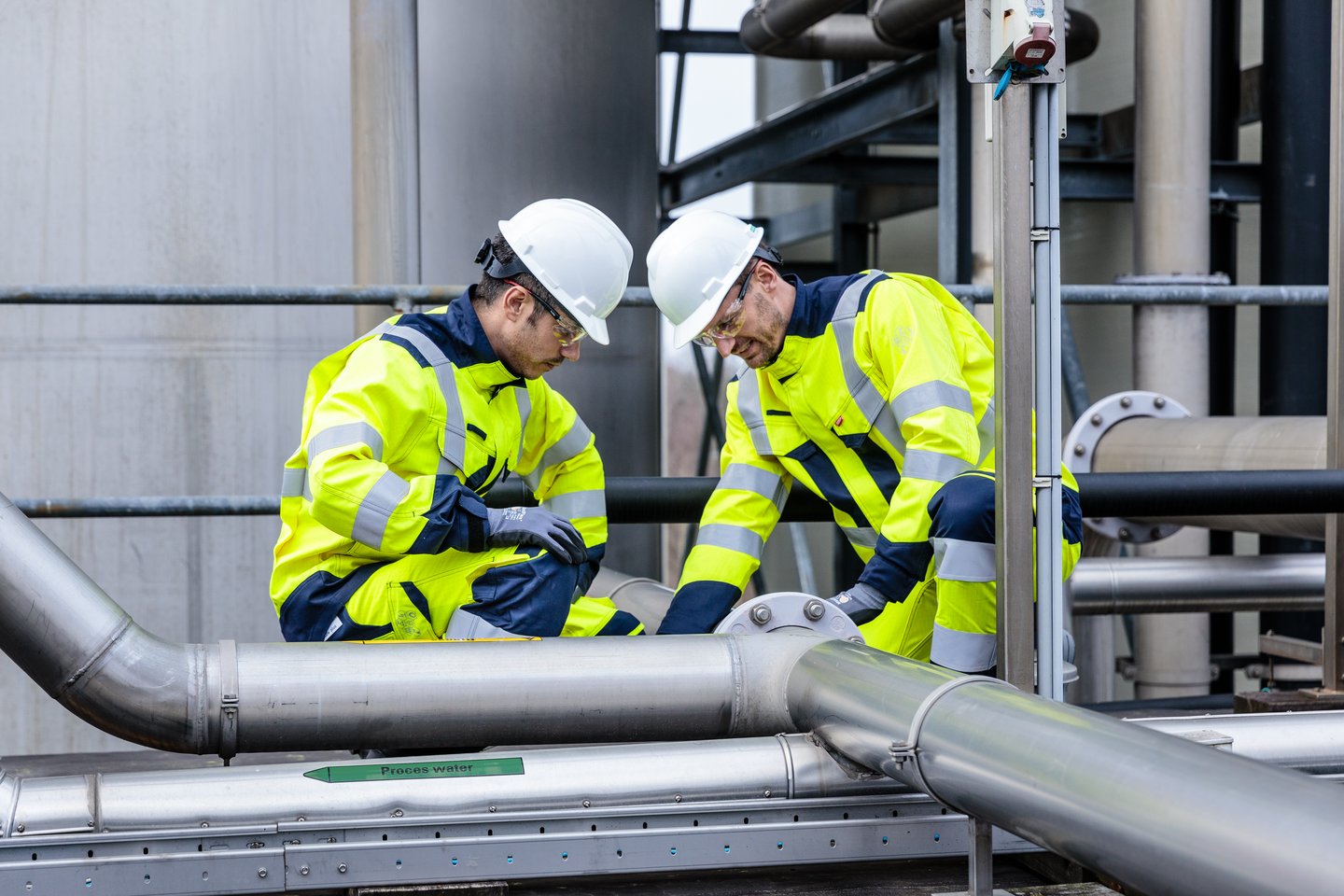
From heavy equipment handling to traffic control, and from railroad works to electrical maintenance - no matter the industry in which you are active, you want your workers to feel safe and confident at work. During the day, at dusk and at night, inside the factory or outside in any weather condition. In this page, we inform you about the role high visibility clothing should play in selecting the best protective clothing for your organization.
High visibility clothing can be defined as ‘clothing that is capable of visually signalling the user's presence’. Wearing high visibility clothing is a requirement in a large range of industries where it is crucial to easily notice workers in any light condition: during the day, but also under illumination of headlights in the dark. Think of hazardous work environments with vehicle operation or mechanized equipment, fog/steam, dust/smoke, limited sightlines and more.
High visibility workwear typically consists of three types of reflective clothing materials, being fluorescent material, reflective strips and contrast material. Contrast material is darker but is less sensitive to dirt compared to the fluorescent material and reflective bands, which prevents the garment from losing its functionality even when workers are exposed to dust or dirt (which typically builds up around their ankles, knees, sleeves and abdomen).
Depending on the industry you work in, professionals might also be in need of protective clothing where the fabric contains FR properties. During your search for protective clothing, bear in mind that work hazards like heat, flames, molten metals, radiant heat and electric arc ask for high visibility clothing with FR properties. In this blog we explain what the difference between FR Treated and Inherent FR fabrics are.
There are multiple other industries, like roadwork or certain activities in construction, where non flame resistant high visibility clothing is sufficient in covering work related risks. A risk assessment should help you discover which possible hazards are present in your work environment, helping you select high visibility clothing that meets all requirements.
EN ISO 20471, or ‘ISO 20471:2013’ is the current international standard for high visibility clothing. It was released in 2013, replacing EN 471:2003 A1:2007. The standard is designed to make high visibility an indispensable factor in guarding the safety of professionals during work.
EN ISO 20471 can be categorized into three classes, providing high visibility in accordance to the risk zone you work in and the ability of the garment to protect the employee.
EN ISO 20471 also sets requirements for the specific placement of the fluorescent and reflective materials. A garment is allowed to be manufactured in the colors yellow, orange or red. In addition, the EN ISO 20471 requires the color coordinates and illumination factors to fall between certain limits.
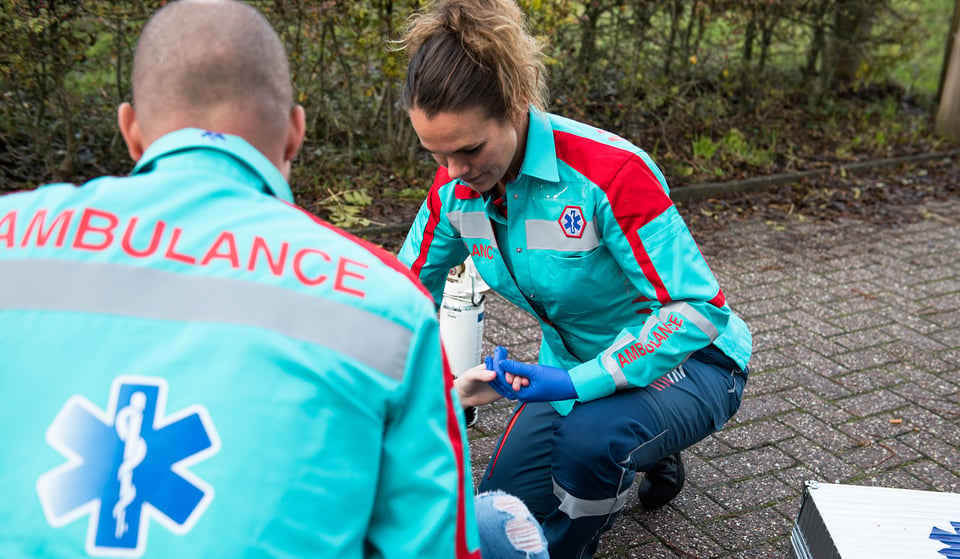
The new uniform for Dutch ambulance personnel is a good example of high visibility clothing. In the realization of these new uniforms, all partners of the value chain played an important role. A story about an impressive collaboration.
As a Health and Safety professional, you want your workers to feel safe, comfortable and confident while wearing their garments. Clothing that is truly protective stretches far beyond the process of selecting and manufacturing the garment - it encompasses its entire lifetime.
Be aware that factors like exposure to sunlight, dust and dirt have a diminishing effect on the illumination abilities of high visibility clothing. Also washing, ironing and repairing activities should be conducted in a way that the fabric does not wear down before its intended lifetime.
That is why at TenCate Protective Fabrics, we encourage you to collaborate with fabric suppliers, garment makers and industrial laundries. Together with our partners we are able to develop protective fabrics that are Made for Life. Read more and find out how you can activate your role in the protective clothing value chain.
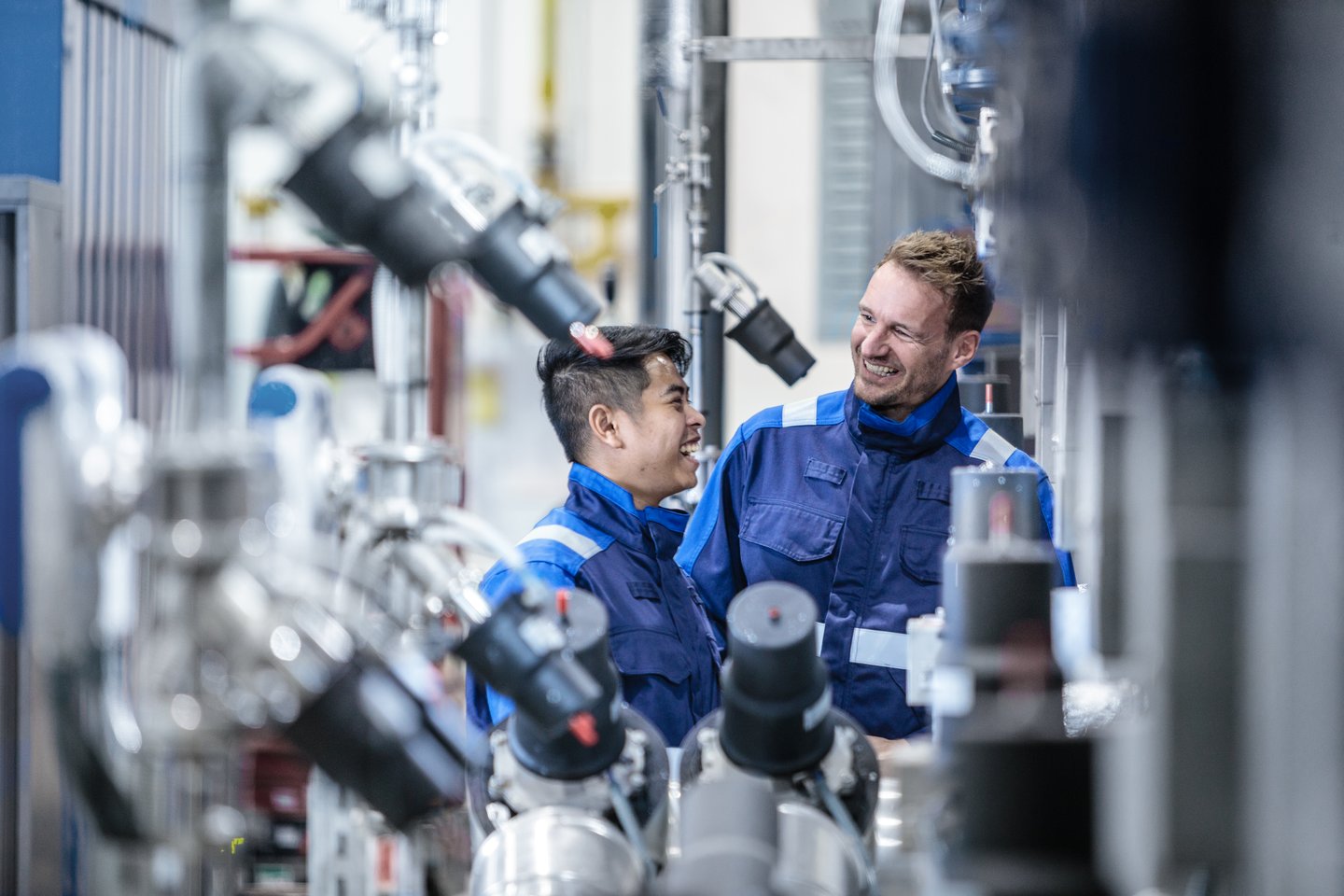
You want to provide your workforce with the highest level of safety and comfort possible, no matter the work environment. Industries like chemicals, oil and gas, utilities and transportation (of hazardous substances) are exposed to unique safety challenges, of which explosion hazard is just one. In this page, we explain the importance of protective clothing that is able to prevent electrostatic charging, called anti static clothing.
Protective clothing that contains electrostatic properties are - as part of a total earthed system - able to suppress static charge (created by friction or rubbing). In other words: the garment is able to conduct electricity.
Anti static workwear refers to clothing where a carbon fibre is weaved through the fabric. Without it, static discharge can create sparks, which can result in fires or explosions. Needless to say, anti static clothing is indispensable for every employer that wants to guarantee a work environment where employees feel safe and confident.
Anti static clothing is always worn in explosion-hazard environments. And if there is a risk of explosion, there is also a risk of fire. Therefore all protective clothing with FR fabrics is also manufactured with electrostatic properties.
EN 1149-5 or ‘NEN-EN 1149-5:2018’ is a anti static clothing standard that sets requirements for the material performance and design requirements of protective clothing with electrostatic properties. Combined with hoods and caps, the anti static clothing forms a total earthed system. The scope of the standard does not include footwear or gloves with electrostatic dissipative properties, as they are not part of the garment itself. It is also not applicable for protection against mains voltages. Important note: anti static clothing standards should not be confused with the standard for electrostatic discharge (ESD).
Anti static clothing that complies with the EN 1149-5 standard is often used by companies that have to comply with the ATEX directive 2014/34/EU, which covers equipment and protective systems intended for use in potentially explosive atmospheres.
The anti static clothing standard is part of a larger system. The fabric from which the anti static clothing is made should be EN 1149-1, EN 1149-2 or EN 1149-3 compliant.
As mentioned before: where there is risk of explosion, there is risk of fire. Therefore, anti static clothing that complies with EN 1149-5 should always be combined with the standard for flame retardant clothing EN ISO 11612 (which has replaced EN531).
Finding a protective clothing solution that perfectly matches your work environment forces you to go on a complex, but crucial journey. As a Health and Safety manager every 3 to 5 years, you are confronted with the need for new protective clothing. It might feel like finding a needle in a haystack.
A risk assessment can help you surface possible hazards in the workplace and understand certain rules and regulations to comply with. But selecting the right fabrics for protective clothing is just the beginning.
That is why at TenCate Protective Fabrics, we encourage you to collaborate with fabric suppliers, garment makers and industrial laundries. Together with our partners we are able to develop protective fabrics that are Made for Life. Read more and find out how you can activate your role in the protective clothing value chain.
When you are in the process of improving your worker’s protective clothing, you most likely encounter multiple challenges, such as assessing relevant risks in your work environment, determining which rules and regulations to comply with, and prioritizing your protective clothing specifications. This FR Fabrics Guide educates you on all relevant aspects of protective clothing and helps you prioritize:
![FR Fabrics Guide [EN]](https://eu.tencatefabrics.com/hubfs/EU%20-%20Images%20website/EU%20-%20Mock-up%20nieuwe%20afmetingen/FR%20Fabrics%20Guide%20%5BEN%5D.png)
At TenCate Protective Fabrics, we develop fabrics that enable you and your colleagues to excel in what you do best. Our protective fabrics are safe and comfortable, both in high and low risk environments. Offering protection in any situation is our goal, making workers feel safe and confident.
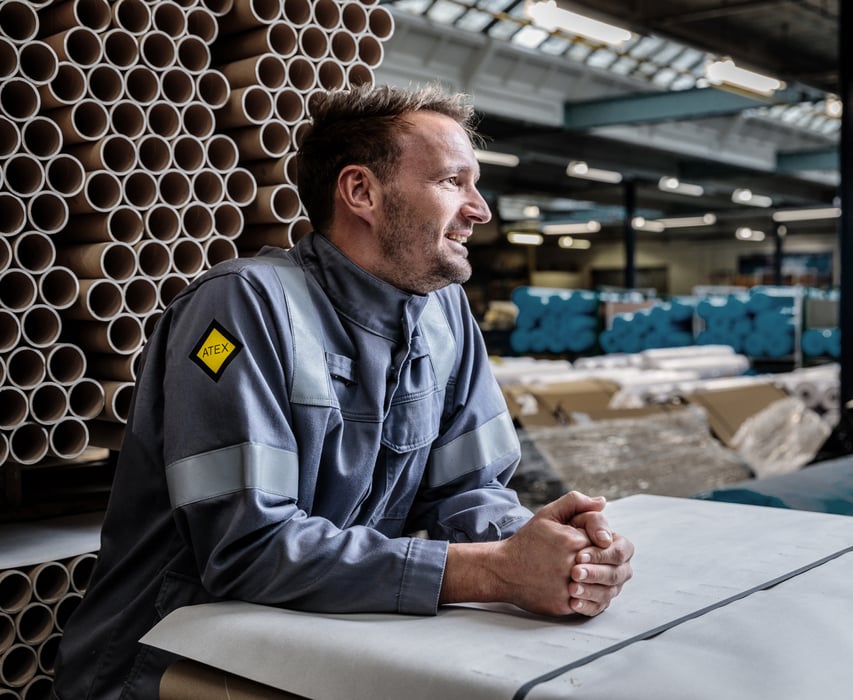
Do you need help with your protective clothing selection or more tailored safety applications? Our specialists are happy to help!
Stay up to date on the latest innovations in protective fabrics.
G. van der Muelenweg 2
7443 RE Nijverdal
The Netherlands
T +31(0)548 633 922





© 2023 TenCate Protective Fabrics